As you can see below I have a ViewController(lets call it viewController A) that contains a container view with a ViewController inside(lets call that ViewController B).
So whats happening below is when you scroll up ViewController A's scrollview is being used until the tabview hits the top. Once the tabview hits the top the scrollview for ViewController B takes over and starts scrolling through the container View. And when you scroll back down viewController B's scrollview goes until the top is visible and then viewController A's scrollview takes over to pull the header view back down.
The Problem
So the scrolling functionality works exactly how I want it to however my problem is when the scrollViews switch between each other it is not smooth. The user has to lift their finger of the screen and put it back down before the right scrollview is recognised. How can I make it so when a user swipes up or down the scrollviews switch smoothly between each other and not have to stop? Like an automatically transition.
I've looked at other posts but I haven't managed to anything that helps so any help would be much appreciated. Thanks in advance
ViewController A
import Foundation
import UIKit
import XLPagerTabStrip
class viewControllerA: ButtonBarPagerTabStripViewController {
@IBOutlet weak var containerHeightConstraint: NSLayoutConstraint!
@IBOutlet weak var scrollView: UIScrollView!
@IBOutlet weak var contentView: UIView!
@IBOutlet weak var headerView: HeaderView!
@IBOutlet weak var tabView: ButtonBarView!
@IBOutlet weak var viewContainer: UIScrollView!
override func viewDidLoad() {
self.scrollView.delegate = self
NotificationCenter.default.addObserver(self, selector: #selector(EnableScroll), name: NSNotification.Name(rawValue: "enableScroll"), object: nil)
containerView.isScrollEnabled = false
self.containerView.bounces = false
super.viewDidLoad()
}
@objc func EnableScroll() {
self.scrollView.isScrollEnabled = true
}
override func scrollViewDidScroll(_ scrollView: UIScrollView) {
let yOffset = scrollView.contentOffset.y
if scrollView == self.scrollView {
if yOffset >= 250 {
//tabView has reached the top
//enable ViewController B's scrollViews
NotificationCenter.default.post(name: NSNotification.Name(rawValue: "EnableScroll"), object: nil)
}
}
}
}
ViewController B
class viewControllerB: UIViewController, IndicatorInfoProvider, UIScrollViewDelegate {
@IBOutlet weak var scrollView: UIScrollView!
override func viewDidLoad() {
super.viewDidLoad(
self.scrollView.delegate = self
NotificationCenter.default.addObserver(self, selector: #selector(EnableScroll), name: NSNotification.Name(rawValue: "EnableScroll"), object: nil)
}
@objc func EnableScroll() {
self.scrollView.isScrollEnabled = true
}
Override func scrollViewDidScroll(_ scrollView: UIScrollView) {
let yOffset = scrollView.contentOffset.y
if scrollView == self.scrollView {
if yOffset <= 0 {
//scrolling down, top of ViewControllerB is full in view
self.scrollView.isScrollEnabled = false
//enables ViewController A's scrollview
NotificationCenter.default.post(name: NSNotification.Name(rawValue: "enableScroll"), object: nil)
}
}
}
}


